Namibia, a nation known as the ‘land of contrasts’, is a mysterious, ethereal and beautiful place that today remains for many even well-seasoned travellers somewhat of an enigma. A dry and desolate rectangle of land, Namibia is often overlooked as a luxury safari destination. Slowly but surely though, an increasing number of intrepid travellers are beginning to unearth the inexhaustible delights that Namibia has to offer. It is home to some of the most enthralling and enchanting scenery anywhere in Africa and nowhere else is this typified more than in the Etosha National Park (map), one of the country’s largest and most popular conservancies. Here are just a few reasons to visit Etosha National Park:
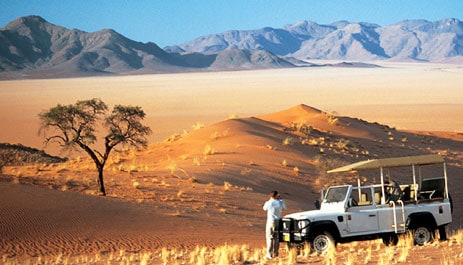
Why visit Etosha National Park
First attaining National Park status in 1907 when Namibia was still a German colony known simply as South West Africa, the Etosha National Park is home to a wide variety of mammals, birds, reptiles and perhaps unusually for a semi-arid region, one species of fish.
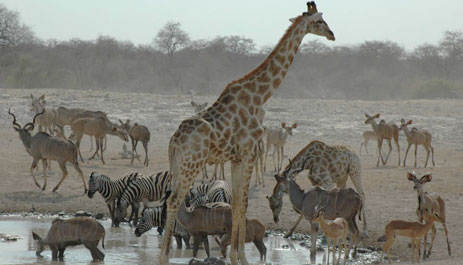
The vast salt pan
Perhaps one of the best reasons to visit Etosha is to see the large salt pan. Stretching over 6,500km², the salt pan used to be a vast ancient lake once before seasonal shifts isolated the body from the flow of the Kunene River. This produced the immense canvas of shimmering white earth we see today. For photography enthusiasts, Etosha and indeed Namibia as a whole provides some of the most incredible panoramas in the world and the contrasts of the bright salt rich earth against the surrounding shrub land is quite the spectacle.
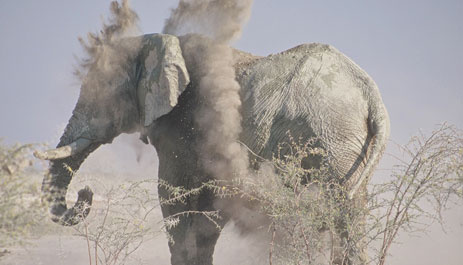
Although the hyper-saline conditions make it difficult for wildlife to flourish on the pan itself, the annual rains that occasionally flood the area promote the growth of huge fields of green-blue algae, in turn attracting great flocks of flamingos and pelicans which journey to the plains in dense clouds of colour and noise.
Diverse ecology
Beyond the pan though a variety of micro-climatic networks support an eclectic ecology including broad leaved woodland to the east of the park, thorn bush, and shrub. Over thirty perennial waterholes dotted across Etosha act as oases for the wildlife and are often the best places to spot a host of animal and birdlife, drinking and bathing in the waters. These sightings are particularly prevalent during the drier winter months from June – September when lower rainfall draws innumerable species from far and wide to the springs.
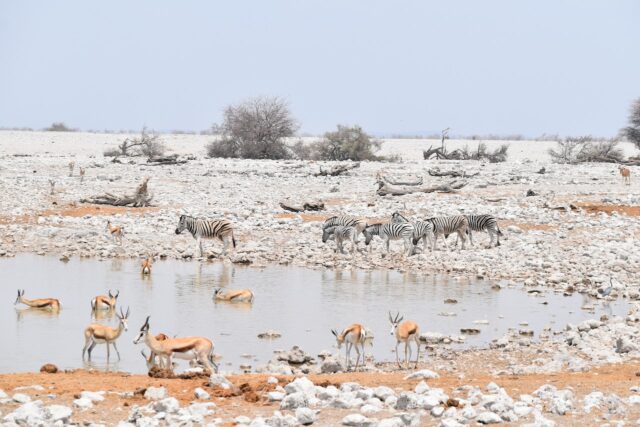
High number of predatory species
An interesting phenomenon in the Etosha National Park is the relatively high number of predatory species including lions, hyenas and jackals which stalk the plains and grasslands and as such encourage many types of game to congregate in large numbers as a means of defence. This habit results in impressive sightings of zebra, wildebeest, giraffe, springbok, impala and eland which abound across the region.
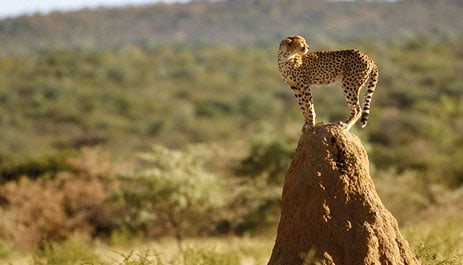
Namibian elephants
Herds of elephant have been recorded travelling in numbers of 50 and over trailing across the region in search of food and according to studies those individuals found in Etosha are thought to be the largest in the world. Intelligent, charismatic and yet captivatingly graceful, Namibian elephants are a highlight of any trip to the area.
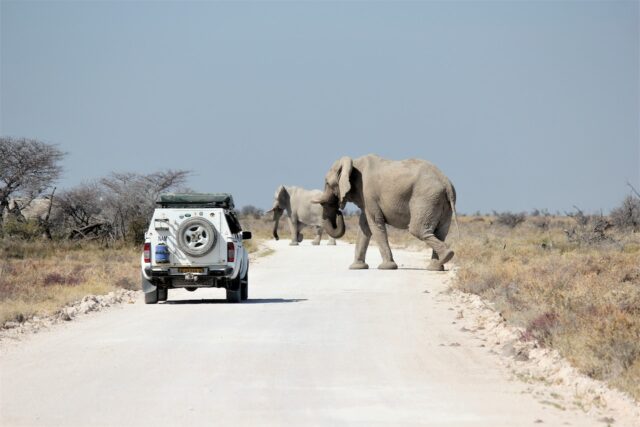
Luxury lodges in Etosha
Although for a long time very few permanent accommodations were established in Etosha, today an impressive but still very select portfolio of properties are scattered in and around the park including the luxurious Epacha Game Lodge, the exclusive Little Ongava and Mushara Lodge a paragon of colonial chic.
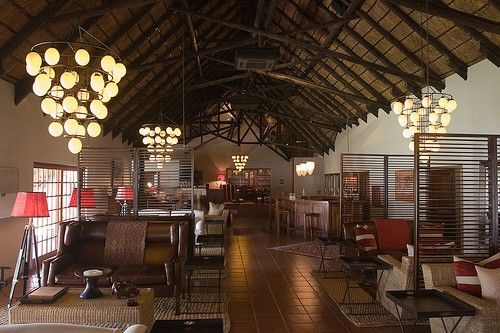
Most lodges and camps provide organised daily game drives out into the bush led by experienced trackers who offer the greatest chance of seeing rarer species including black rhinos and black-faced impalas. However, Namibia is also one of the homes of the self-drive safari and more and more tourists are taking to the roads and heading out on an independent adventure. The wide open roads and flat plains around Etosha make it an easy area to explore by car and most areas can be negotiated quite easily by 2WD vehicles.
Read about my Zambezi River cruise in northeastern Namibia.

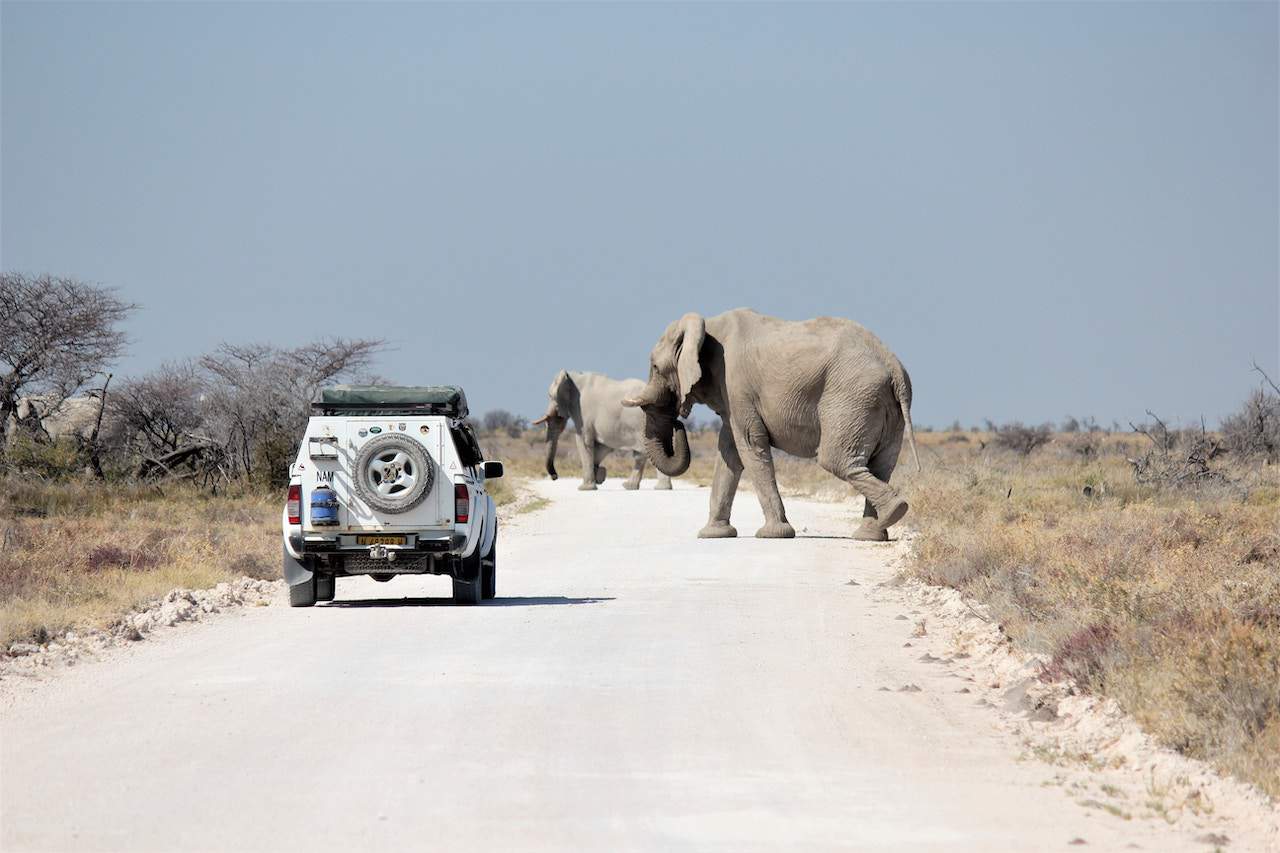


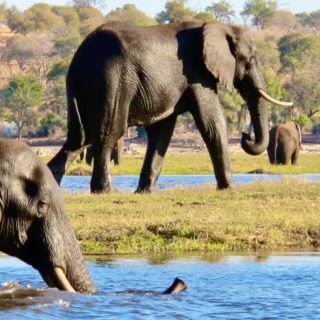
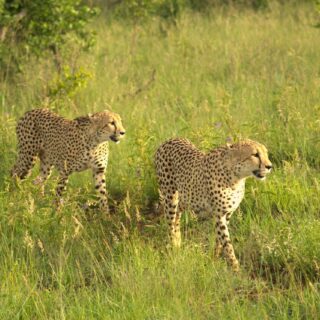
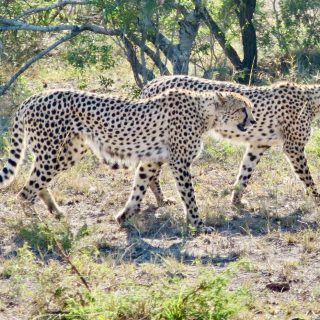






Hi Keith, I was just traveling around the internet and came across your blog. I love it. Thanks for the Etosha article. I have great memories from there. I have a blog http://africainside.org/stories-from-africa/who-is-nani-2/ that you may enjoy. Lets stay in touch?
Lori
Incredible. I’ve always wanted to visit Namibia, this post has just made me want it more.